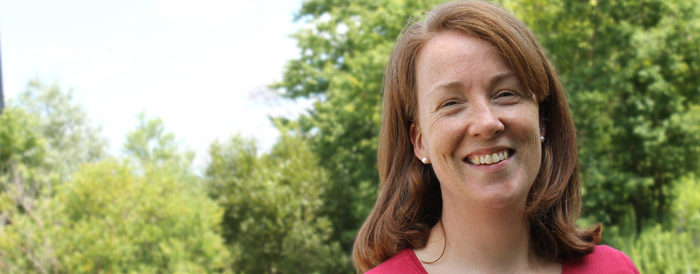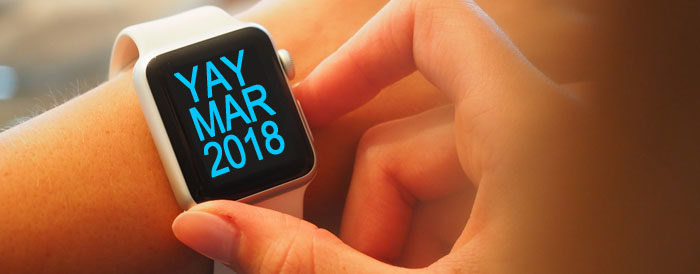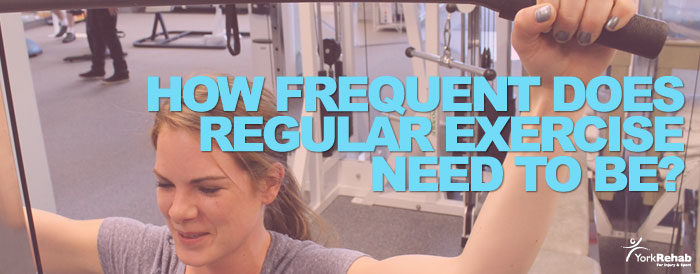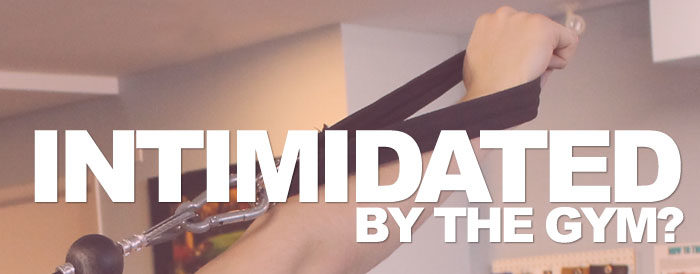Motivation
Our Awesome Staff
We’ve been in business for more than 20 years offering chiropody, massage and physiotherapy treatment to patients within the town of Newmarket and surrounding areas. We pride ourselves on our approach to treatment that is 100% patient focused. Our policy has always been that for every Physio appointment, the patient is seen exclusively by a Physiotherapist for the entire visit. This ensures the patient’s comfort, movement and progress are exclusively observed by the therapist. Some clinics use physio assistants during patient visits…a strategy that sometimes frees up the Physiotherapist to see another patient or two at the same time – we believe treatment is more effective when our therapist stays with one patient for their entire visit. This allows the therapist to directly monitor patient’s progress by directly observing how the patient feels as they receive treatment and are directly accessible when invariably the patient has a question. Our goal in caring for our patients is that we treat them effectively and fast…we aim to minimize your time with us. This patient-centric approach only works if we have therapists who truly care about the patient.
We are very fortunate to have such caring staff. So much so that their care often extends beyond our four walls. Here’s an awesome example of that. Meet Fiona, one of our physios who has been with us for several years. She’s a licensed physiotherapist who also has a diploma in Mechanical Diagnosis and Therapy – a title possessed by less than 30 therapists in Canada. Fiona will be traveling to Peru (August 2018) with a team MDT trained therapists to participate in a humanitarian effort that will assemble a pop-up clinic to offer treatment to locals for several days. This program is aimed at providing quality MDT care to underserved areas around the world.
We asked Fiona a few questions about her trip.
——————————————-
——————————————-
Why did you get involved with this initiative?
I am passionate about MDT and travel – this is a great way to merge both. Being able to share my knowledge of MDT as an evidence-based approach for the benefit of underprivileged individuals is quite rewarding. At the heart of the method is how we educate patients to treat themselves to continue to self-manage their symptoms should they recur –MDT is not well known to Peruvians… the same holds true even in right here in Toronto, Canada!
Have you done any other humanitarian efforts before?
It wasn’t quite a humanitarian effort per-se, but I did travel to Iqaluit, NU in the Canadian Arctic. I arranged a leave of absence, to allow me the opportunity to work for the Government of Nunavut for six-weeks in April/May of 2017. There I was able to use MDT to assist with offering evidence-based care, while also while also significantly reducing their outpatient orthopaedic wait list.
So, this will be a lengthy trip to allow you to treat patients over an extended period of time, how are you affording it?
If you count 18+ hours of travel with three layovers, then yes it’ll be lengthy. But in reality, the trip will actually be relatively short. We are aiming that each patient will receive an assessment and follow-up visit during our time in Peru. What allows us to do this is the potential for rapid and lasting change with the use of McKenzie MDT.
- We are away for 11 days, but 2 of those are travel days (3-connections, 18+hr travel)
- We are offering a 3-hour workshop for local physicians and physiotherapists
- We are offering a 4-day clinic for the under-privileged
- Then, for our own fun/reward, we’ll visit Machu Picchu
Are you going with a big team?
This year will mark the largest group of clinicians gathered together for Mechanical Care Everywhere. A total of 11 of us from four different countries will participate. While those numbers appears relatively small, eight of those clinicians participating are Diploma Level. That’s amazing! But let me put it into perspective: To date there are 450 Diploma Level clinicians worldwide…eight of them will be represented on this trip! Within Canada there are 30 Diploma Level clinicians…York Rehab has 2 of them!
Why choose Peru as the destination?
Jason Ward (PT), the founder of Mechanical Care Everywhere has visited this area before and has connections there to assist with an effort of this magnitude.
It’s probably going to be an expensive trip – who is sponsoring you guys?
None of the participants received any funding for this trip – we have all paid out of our own pocket for air travel, accommodation, food and the costs associated with the 4-day clinic. Friends, family members, colleagues and various branches of the McKenzie Institute International have provided donations to Mechanical Care Everywhere to assist with offsetting some costs like the following:
- $25.00 (1 patient exam & home program)
- $50.00 (1/2 day of translators)
- $100.00 (1/2 day of clinic operation)
- $250.00 (1 full day of clinic operation)
If you want to learn more about the project you can check out the MCE website: www.mechanicalcareforum.com/mce
So this will be a series of trips so you can do follow-up visits right?
If we return to Peru again it will be a separate initiative. For this trip, our goal is to assess each patient and complete a follow-up visit during our brief time in Peru. At the heart of the method is how we educate patients to treat themselves to continue to self-manage long after we have returned home.
How is it that MDT can offer such fast results?
Mechanical Diagnosis and Treatment (MDT) is a safe, structured and evidence-based system used to assess and treat patients. The system can be applied to the spine and/or extremities. As MDT therapists, our greatest skill lies in our assessment, where we use the information collected from how a patient feels (symptoms) and how a patient moves (mechanics) to classify them into a particular group. From there, we can then match our treatment approach with the particular classification. Patients receive a program designed specifically for them, emphasizing active involvement, education, self-management and prevention of recurrence. With continual assessment and re-assessment of the patient (often less than 6 sessions), results are achieved fast, decreasing the financial burden on patients.
Once you leave Peru, how will you know if the trip is a success?
Following our 3-hour educational workshop with the local Peruvian physicians and physiotherapists, we will offer the opportunity for those interested to observe with us during our clinic days as an added learning opportunity. Thereafter, we will also network with these clinicians to encourage their learning remotely through the many forms of social media. This way, education will continue long after we have returned home.
I’d also like to share a story of MCE Founder Jason Ward – last year he had a woman waiting in line to see him specifically. She was offered the opportunity to be assessed by one of the other therapists, but declined; content to wait for Jason himself. Jason remembered her as a patient from the previous year. This woman waited hours in line to thank Jason for his assistance the year prior. She has been continuing with her exercises since Jason’s last visit and has remained pain-free as a result. Now THAT is proof in the pudding!
——————————————-
——————————————-
Thanks for taking the time to share a bit about this initiative Fiona. Have a great trip!
We are so proud of Fiona.
March…The Perfect Time for Resolutions
Most would not argue with the statement that 80-90% of people who start a New Year’s resolution at the beginning of January are probably not going to make it to February. Most resolutions are meant to improve people’s lives and make them happier, so it’s sad that so many people give up on their dreams so prematurely. There are varying reasons that can explain the failure to keep resolutions but some of the more common ones are connected to setting too many goals at once, making your goals too general or making them too big. Whether you’ve consciously or unconsciously abandoned your resolutions after only a few weeks of trying, the good news is you don’t have to wait until next January to make another attempt. March is the perfect time to pick yourself up, dust off and give it another go. Here are a few things that can help you make your second shot at your desired life change more permanent.
First, Look at the Data
If you’ve failed at keeping up your January resolutions, you’ve now accumulated useful data. Between when you started and when you quit, you can likely pull some information that can show you what worked with your attempt and what didn’t. Taking a closer can help you to figure out what things you can do differently so that you don’t repeat failure a second time. For example, maybe your resolution was to start exercising regularly (5 days a week), but you were only able to exercise 3 evenings the first week, then 1 evening each of the next two weeks. That data would show evening exercise didn’t fit well with your schedule. So on a second attempt at the resolution, exercising first thing in the morning would be a better plan.
Figure out what’s REALLY Important to You
People sometimes decide on resolutions for superficial reasons and a deeper look can uncover that a particular resolution may not really matter to you. You might have a resolution to stop eating chocolate – but upon closer inspection you discover that what you really want to do is start eating healthier as a whole. Deciding to focus on only eliminating chocolate from your diet wouldn’t yield you the type of results you want because you could simply replace one less than ideal food choice with another.
Be Specific with Your Goal Setting
Break down your goal into specific parts so you know exactly what you need to do, and when you plan to do it. The wrong way to approach a resolution like incorporating more exercise into your routine would be to say “I’m going to exercise more this year”. When you’re that vague, it allows you the flexibility to interpret “…exercise more…” any way you want – i.e. I exercised twice this month, hopefully I’ll exercise more next month. It may not unfold exactly that way but you get the gist. Instead, be specific on how you are going to integrate exercise into your routine, i.e. I’m going to do yoga four times a week on Mon, Wed, Fri and Sat first thing in the morning. By listing specific steps, you’ll know when you’re not keeping up and that you might need to address something in order to stay on track with your goal. Choose the SMART method for goal setting:
Specific
Measurable
Achievable
Relevant
Time-based
Don’t Do Too Much at Once
There’s an endless list of things one would want to change about themselves but trying to make many changes at once is usually difficult. Start with one goal and once you have built some momentum with maintaining it, only then should you consider working on another goal at the same time.
Create Accountability for Yourself
Don’t keep your goals hidden, share what you want to accomplish with someone close to you. You’ll be more committed when you know someone is watching. And invite them to inquire about your progress. When you know someone is going to check up on you, it’s added incentive for you to keep up with your efforts so you have results to communicate when you’re asked: “How are things going?”
Measure and Celebrate
Keep track of your progress, whether by journaling or marking progress on a calendar. A visual record of your progress helps you maintain momentum because it allows you to see how much you’ve already done. And identify milestones so that you can have mini celebrations along the way. If you need to lose 20lbs, it’s much better to celebrate each time you lose 5 than waiting to celebrate only after you’ve lost the full 20.
And Finally, Lighten Up!
Making a change is not easy, especially if it’s a significant change. There will be moments of discomfort and times when you just won’t do what you are supposed to do. If you have a moment of weakness and stumble, don’t use that as an excuse to quit – no one is perfect, failure along the way is normal. Also, accept that your goal won’t always be exciting and fun to tackle and that you may often not want to complete your task(s). Most of the time you probably won’t feel like doing what you should be doing – recognize that motivation won’t always accompany you. Despite the absence of motivation, do what you need to do anyway. Focus on developing the simple habits that will get you going, i.e. if you need to get in a morning run – just focus on getting your shoes on, and once those laces are tied what follows will be automatic.
Add These 6 Things to Your Christmas Wish List
Christmas is just around the corner and between holiday parties and family functions, your fitness and healthy living choices may take a back seat to all the “excess”. Plus all of the social demands on your time can make sticking to a regular fitness routine difficult. But by asking Santa for the right gifts, you may be able to keep your fitness goals on track this holiday season.
Here is a cheat sheet of some inexpensive, yet effective fitness gifts to put on your wish list:
Yoga mat and yoga block
Some of the benefits of practicing yoga include increased flexibility, reduced stress, improved sleep and boosted immunity. While you don’t need to practice yoga in a fancy studio to reap these benefits, you do need a yoga mat. A yoga mat cushions your hands and feet and provides a non-stick practice surface. A must for any aspiring yogi!
If you think yoga poses are beyond your range of flexibility or strength, consider asking for a yoga block. Yoga blocks are brick shaped props made of cork, wood or hard foam that raise the floor to your hands of feet; therefore, helping make yoga poses easier and safer for beginners with limited flexibility or those experiencing reduced mobility.
Activity Tracker App
Downloading an activity tracker app, such as The Walk: Fitness Tracker Game or Zombies, Run! could be the inspiration you need to stay active. These apps immerse you in a story and provide you with a mission, which is finished by completing a specific distance or duration of activity. If you are not interested in participating in the story on a daily basis, the apps can also track your step count and distance covered.
IceTraxx
Wish you could keep walking, hiking and running outdoors this winter? But are worried about the possibility of slipping on icy sidewalks or trails? Then consider asking for a pair of IceTraxx to help increase traction and help prevent slips or falls on snow and ice. IceTraxx fit easily on most styles of boots or shoes without snaps, straps or buckles and will allow you to continue training outdoors this winter. These are available at our Newmarket physiotherapy clinic and affordably priced at $10.00 per pair.
TRX
It is pretty common to see a contraption with yellow and black straps hanging from the ceiling of your gym, but you may not be sure what it is. The TRX Suspension Trainer relies on gravity and your body-weight to provide a total body workout. With just one training tool you can complete a variety of exercises that will increase your heart rate and build strength. TRX is compact, lightweight and when used with a specialized door attachment can be used while traveling or at home.
A workout buddy
Include a “I need a fitness buddy” on your wish list this year. It would be wonderful if you were gifted a like-minded friend or family member to join you on your fitness journey towards pursuing a healthier lifestyle together. You could agree to meet at the gym a couple of nights a week, play squash together on the weekends, swim laps at the local community center before work, go for walks on your lunch break, sign up to take a kickboxing class together – the list of options is endless! No matter what you choose, exercising with someone else is a sure-fire way to stay motivated and committed to workout.
Workout attire
Now that you have exercise equipment and a workout partner, you need clothes to wear. From sports bras to shorts, to funny T-shirts to yoga pants, there are tons of clothing options to help you feel good during your workout. Plus having stylish workout gear may help get you in the mood to exercise and can help boost your confidence.
So there you have it, 6 Christmas gift ideas to help keep your fitness goals on track this holiday season and well into the New Year. If you’re looking for a fitness class, our Newmarket physiotherapy clinic offers different exercise classes in our Fitness Studio.
How Frequent does “Regular Exercise” Need to be
Most people don’t have endless amounts of time to spend in the gym every week. So it is a good thing regular exercise means only spending a minimum of 150 minutes a week doing cardiovascular/aerobic activity along with strength training. You can break that into 30-minute segments done five times a week or 40-minute sessions done 4 times a week.
Your exercise routine should include cardio, lifting weights and stretching, which can be combined or divided into separate sessions. But how much of each should you be doing? Here’s a suggested breakdown:
Cardio Exercise
Doing cardio burns calories and can help you achieve a weight-loss goal. It also keeps your circulatory system working optimally and builds your endurance.
How Often:
Aim to do cardio a minimum of 2 times per week for 30-45 minutes per session.
How to Do It:
The key to cardio is getting your heart beat up and breaking a sweat. Walking can be great but if you are not sweating, you need to pick up your pace. Aerobics, cycling, rollerblading, jogging or swimming are some great options that are sure to get your heart rate up.
Looking for something less mundane than walking or running? Here are some options that will have you sweating in no time (link to Zero Running Weight Loss Exercises).
Weight Training
The more muscle you have, the higher your metabolic rate (or calorie burning ability) will be. Lifting weights also help strengthen joints and bones.
How Often:
Aim to do weights 3 times per week for 30-45 minutes per session. Ideally, you should not do weight training on consecutive days. A recovery day or two allows your muscles to heal and rebuild themselves.
What to Do:
Include upper and lower body exercises to cover all major muscle groups. Be sure to lift weights that are heavy enough to tire the muscles – safe technique is key so consult a trainer or physiotherapist. Incorporate bodyweight moves (e.g. push ups, dips, chin ups, etc.) to challenge your body and increase the calorie burn.
Need some ideas on an exercise routine? Here are 6 great exercises you may have forgotten about.
Don’t Forget to Stretch!
Most people forget about stretching, but it is an important part of your exercise program.
How Often:
At least 2 to 3 times a week ideally after a workout.
How to Do It:
Stretch all major muscle groups after each workout, focusing on the body areas that you just finished exercising. Hold your stretches until the feeling of resistance, then breathe for at least a count of ten before releasing. If you experience pain during a stretch, do not continue that movement – if the pain persists consult a health professional to ensure you’re not injuring yourself. Want to know why you should stretch? Here are 4 reasons (link to stretching article).
Scheduled physical activity that helps you reach the recommended 150 minutes of exercise a week can be considered regular exercise. If you’re already active, use the measure of sweating and slight muscle soreness as a marker that your intensity level qualifies as exercise. The more regular you are with exercise the easier it becomes so continue to increase your cardio intensity and move towards lifting heavier weights to challenge your muscles, so you can continue to reap the benefits of regular exercise.
Just starting out? Take it slow with three sessions of 20 minutes each week and build up from there. Never exercised before or are unsure of how to get started? You can make an appointment to see one of our physiotherapists who can help you start exercising regularly – we also offer fitness classes for beginners.
Ready to Join a Gym but You’re Scared
Working out at a gym can be intimidating. You feel like everyone seems to know what they are doing and are already in great shape – you’re worried you’ll look like you don’t belong and maybe people will think you have no right to be there. The cavernous space is filled with mysterious equipment and people are grunting in exertion. It is all very strange and unfamiliar, making you wonder “Where do I start?” or “Will someone laugh at me if I do something wrong?”
Don’t let your fears keep you from exercising at the gym. Here are 7 tips on how to overcome gym intimidation:
1. Set Up an Orientation
Unsure of how to use the machines, or where certain equipment is located? Many gyms offer a free orientation to new members – if this option is not presented, all you have to do is ask for it. During the orientation, a staff member will show you how to properly use the equipment and this one-on-one opportunity will also be great time to ask any other questions. And remember it won’t be the only time you can ask for help…anytime you’re unsure or curious about something just ask the staff – that’s what they’re there for.
2. Find Common Ground
Start by doing something you know. Do you ride your bike a lot or go for walks/runs? Putting your knowledge and familiarity with these activities to use will help you feel more confident in what you are doing. So start your workout sessions with just the bike or treadmill, it’s okay if you don’t do anything else during your gym visits. After a few sessions in the gym environment, your confidence will grow.
3. Train with a Friend
Working out with a friend can help ease the culture shock of working out at the gym. Tap into your friend’s knowledge and ask for help with the equipment or advice on how to do a certain exercise. Chatting with your friend about these things is a great distraction from your fear and will help get you moving comfortably in the space a lot sooner.
4. Hire a Personal Trainer
Working one-on-one with a personal trainer can be helpful in learning about proper form and technique. They will create a workout plan based on your goals and designed to suit your abilities, and they can guide, coach and encourage you through it. A certified personal trainer is one way to get you on a path towards the results you want – that’s how the celebrities do it. However, if you’re dealing with a nagging injury (or pain), consult a health professional like a physiotherapist to ensure your intended workout regimen will help and not hurt you.
5. Take a Group Class
Most gyms offer a wide variety of group lessons that take the guesswork out of coming up with a fitness routine. The instructor will demonstrate the moves, tell you how many repetitions to do and provide motivation. All you need to do is show up…how easy is that?!
6. Dress Comfortably
If you don’t feel comfortable in tight or form-fitting workout clothes then don’t wear them. You want to feel comfortable, not self-conscious. Not sure what to wear? Dress for ease of movement, nothing bulky or heavy. However, given the current size of the active-wear industry, it’s pretty much a certainty that there’s a perfect outfit out there for any shape and size. Finding the right active-look can put you in the right frame of mind to exercise so go find your gear.
7. Choose Off-Peak times
It’s very frustrating when you’re trying to stick your tight schedule or you’re in a rhythm with your workout and you have to wait to use a piece of equipment at the gym. Generally, the busiest times at the gym are early morning, lunch hour and right after work. So, if it’s possible for you to schedule your workouts outside of the busy hours you’ll have a more seamless (and hopefully more enjoyable) workout. Not only will you be able to go through your routine more efficiently, you’ll also avoid any wandering eyes that are waiting in line to use the same piece of equipment you just got a hold of.
Getting used to the atmosphere at the gym can take some time but if you stay the course and maintain your commitment, the end result is a healthier you – which is worth it. So be patient with yourself and try out these tips if want to hit the gym but are struggling to get over your fear. And remember, your fear is often a liar – once you start you’ll realize all that worry was for nothing. Good luck with your journey to a healthier you.






